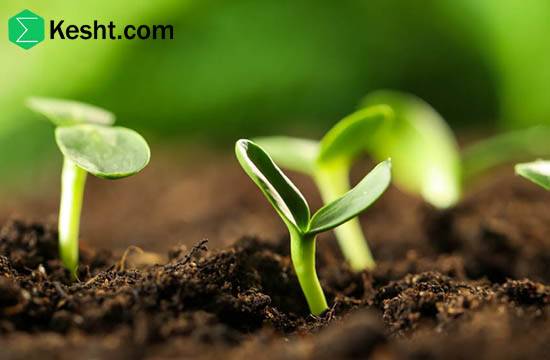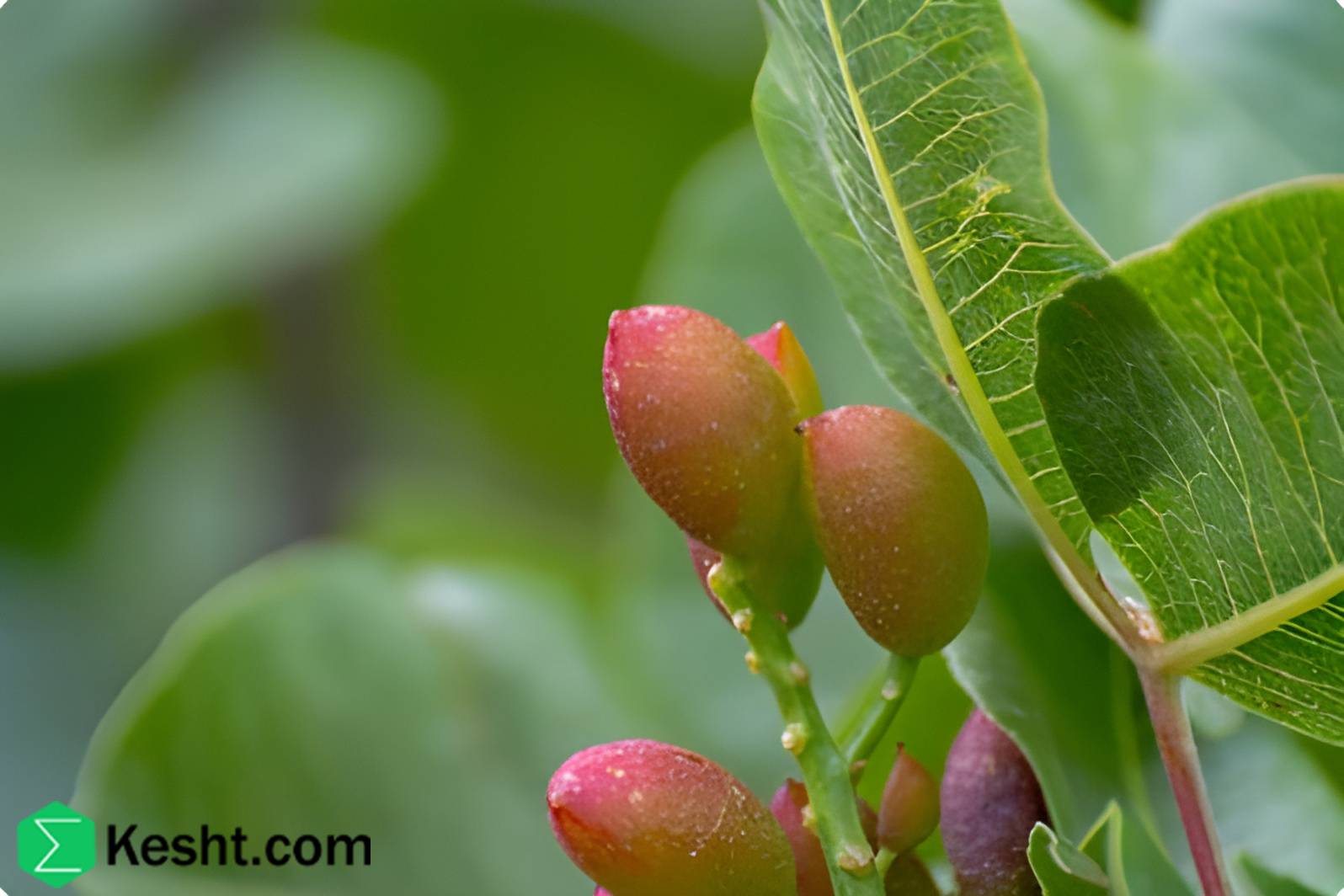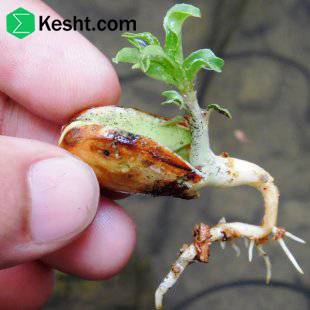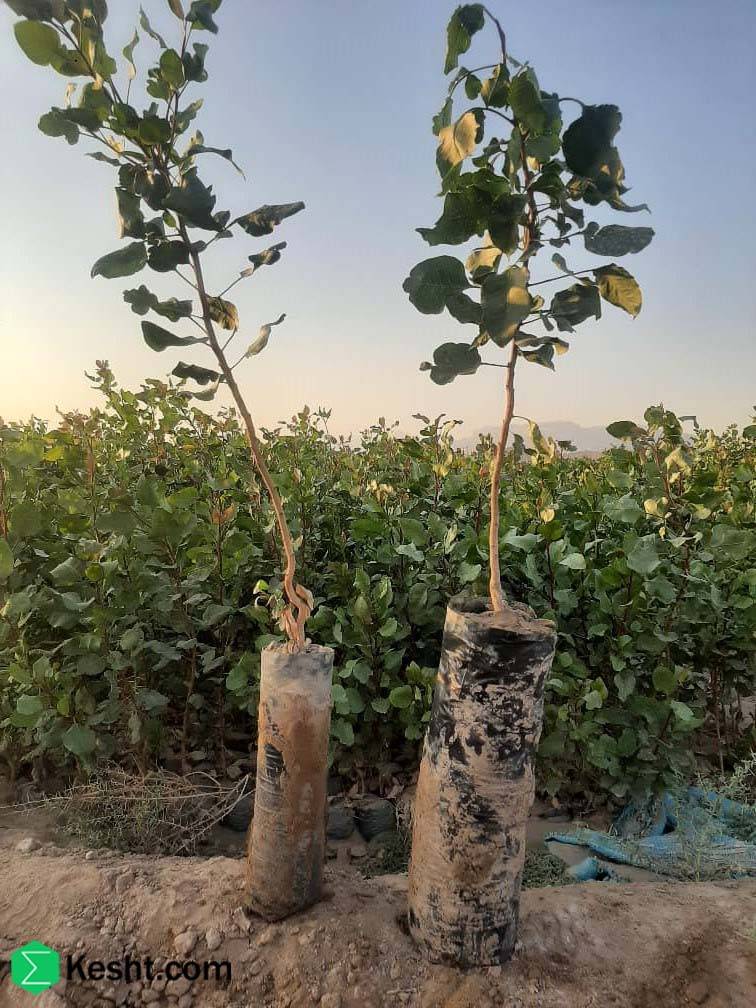Monthly fertilization program for pistachio from planting to first bearing (years 1–5)
Assumptions
- Temperate Iranian climate (Solar Hijri calendar), drip or micro‑jet irrigation, moderately calcareous soil. If your conditions differ (e.g., flood irrigation, saline water, hotter/colder climate), tell me and I’ll tailor the plan.
Suggested annual totals (adjust with soil/leaf tests)
- Years 1–2: N = 30–60 kg/ha | P2O5 = 20–40 | K2O = 0–30
- Years 3–4: N = 60–100 | P2O5 = 20–40 | K2O = 30–60
- Year 5 (pre–full bearing): N = 80–140 | P2O5 = 30–50 | K2O = 60–100
- Note: Use low‑chloride K sources (K2SO4/KNO3); place P early and near roots; cut back N after mid‑summer.
Years 1–2 (establishment)
| Month (Solar Hijri) | Objective | Suggested share of annual total | Key actions |
| Esfand (late Feb–Mar) | Preparation | — | Low‑salt compost 5–10 t/ha every 1–2 years; if alkaline/sodic: elemental S/gypsum. Fe‑EDDHA in soil around emitters (5–15 g Fe active per tree). Foliar Zn + B if needed (per label). |
| Farvardin (Mar–Apr) | Gentle start of growth | N: 20% • P2O5: 40% | Begin fertigation in small splits; avoid heavy N right at budbreak. |
| Ordibehesht (Apr–May) | Active vegetative growth | N: 35% • P2O5: 40% | Continue split N; targeted foliar micronutrients only if deficiencies are present. |
| Khordad (May–Jun) | Root and canopy development | N: 30% • P2O5: 20% • K2O: 30% | Start light K (in K‑poor soils or with saline water; use low‑Cl sources). Light calcium nitrate if needed. |
| Tir (Jun–Jul) | Wrap N; boost stress tolerance | N: 15% • K2O: 40% | Taper N; raise K modestly; supply Mg if interveinal chlorosis appears on older leaves. |
| Mordad (Jul–Aug) | Tissue firmness/heat stress | N: 0–10% • K2O: 30% | Apply a little N only if foliage is actively green; focus on K and even irrigation. |
| Shahrivar (Aug–Sep) | Finish | — | Stop N; if salinity is building, run a leaching irrigation. |
Years 3–4 (canopy structure, pre‑bearing)
| Month | Objective | Suggested share of annual total | Key actions |
| Esfand | Soil fixes & micros | — | As in years 1–2; Fe‑EDDHA where chlorosis is recurrent. |
| Farvardin | Early growth | N: 20% • P2O5: 40% | Gentle N and P; foliar Zn/B if needed. |
| Ordibehesht | Peak vegetative growth | N: 30% • P2O5: 40% | Split doses via fertigation; watch EC/salinity. |
| Khordad | Start K | N: 25% • P2O5: 20% • K2O: 30% | Begin regular K; choose K2SO4/KNO3 with saline soil/water. |
| Tir | Heat stress | N: 15% • K2O: 40% | Taper N; keep K steady; Mg/Ca as needed. |
| Mordad | Complete K | N: 10% • K2O: 30% | Avoid high N; focus on tissue quality and stress tolerance. |
| Shahrivar | Wrap up | — | End fertilization; leach if needed. |
Year 5 (start of light cropping)
| Month | Objective | Suggested share of annual total | Key actions |
| Esfand | Preparation | — | Organic/amendments + Fe‑EDDHA if needed. |
| Farvardin | Early growth and set | N: 20% • P2O5: 40% | Moderate N/P; avoid heavy N near bloom. |
| Ordibehesht | Stabilize growth | N: 25% • P2O5: 40% | Continue split N. |
| Khordad | Start light nut set | N: 25% • P2O5: 20% • K2O: 30% | Introduce K; if irrigation water Cl– is high, avoid KCl. |
| Tir | Early kernel fill | N: 15% • K2O: 40% | Keep K steady; taper N. |
| Mordad | Quality and firmness | N: 10% • K2O: 30% | Keep irrigation uniform; targeted micronutrients if deficiencies show. |
| Shahrivar | Finish | — | End fertilization; if leaves stay healthy, one light N after an early harvest can be considered. |
Key foliar sprays (only if needed and after a leaf test/spot test)
- Zn: Zn chelate 0.2–0.3% or zinc sulfate at safe, labeled rates in late Esfand/early Farvardin.
- B: Boric acid 0.1–0.15% pre‑bloom (narrow safety margin—do not overapply).
- Fe: For chlorosis, soil application of Fe‑EDDHA in early spring is more effective than foliar.
- Mg: Magnesium sulfate 0.5–1% in Khordad/Tir if deficiency appears.
- Notes: Keep spray solution pH 5.5–6.5; spray in cool weather; always patch‑test on a few shoots first.
Suggested fertilizer sources
- N: Urea (acidified in fertigation), calcium nitrate or CAN where sodium is low.
- P: Phosphoric acid or MAP; in calcareous soils, place near roots/band for better efficiency.
- K: K2SO4 or KNO3 (avoid KCl in most pistachio orchards).
- Amendments: Gypsum for sodic soils; elemental S for gradual pH adjustment.
Execution essentials
- Split doses across the month (especially with drip).
- Monitor water quality (EC, bicarbonate, chloride). Keep the fertigation solution’s EC rise over raw water as low as practical (ideally < ~0.5 dS/m).
- Reduce N after mid‑summer to avoid late vegetative flush and quality loss.
- In saline soils/waters, avoid KCl and consider periodic leaching irrigations.
Want a site‑specific schedule? Share your water EC/ions, recent soil and leaf tests, tree age/density, and I’ll fine‑tune rates and timing for your block.







